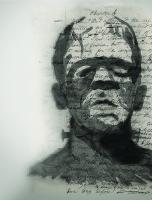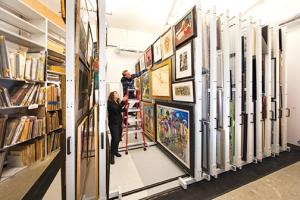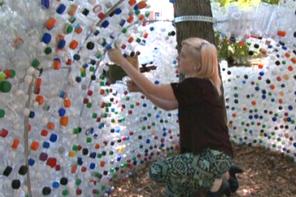By Karen Shih, Terp magazine
The university is exploring a partnership with Washington, D.C.’s famed Corcoran Gallery of Art and Corcoran College of Art + Design that could lead to access to the gallery’s $2 billion, 17,000-piece collection, enhanced art and design opportunities for Maryland students, and increased visibility and presence for the university in the nation’s capital.
President Wallace Loh in April signed a memorandum of understanding with the head of the Corcoran Board of Trustees and has appointed an 18-member task force to consider a formal collaboration. It is scheduled to report its findings to him by the end of the summer.
“We are energized by the potential to enhance both institutions, to bring together diverse academic disciplines, students and faculty to create something truly unique and compelling in higher education,” Loh says. “This is a moment of remarkable possibility.”
The Corcoran was established in 1869 as D.C.’s first private art museum, dedicated, in the words of founder William Wilson Corcoran, to “encouraging American genius.” Its renowned collection, housed just a block from the White House, includes works by Degas, Monet, Picasso and Sargent.
The college opened in 1878 and today has approximately 550 undergraduate and graduate students. In recent years, the museum has struggled to overcome severe financial troubles, including $7 million operating deficits for the last two years and a $130 million backlog in building repairs.
The agreement signed by the Corcoran and UMD notes the advantages of UMD’s management expertise, financial strengths, economies of scale and capacity to help run the Corcoran’s administrative side, in such areas as student services, fundraising, facilities management and human resources.
The UMD task force, led by Senior Vice President and Provost Mary Ann Rankin; Curlee Holton, interim executive director of the David C. Driskell Center; and School of Architecture, Planning and Preservation Dean David Cronrath, is now investigating the possibilities for new courses, joint degrees and innovation studios, which would bring together students and faculty from disciplines like engineering and business with the arts.
“All our students will have to be creative problem-solvers and designers as well as entrepreneurs in their jobs,” Cronrath says.
“All great universities have a well-balanced set of disciplines,” he says. “This will complement nicely the partnership with the University of Maryland, Baltimore, which tends to focus on science and engineering.”
If the task force recommends moving forward, the University of Maryland Board of Regents and the Corcoran Board of Trustees will vote on the decision.
This partnership would be unique but not unprecedented. The University of California, Los Angeles operates the Hammer Museum, and Johns Hopkins University has partnered with the Peabody Institute for more than three decades.
“It’s a wonderful opportunity, and it takes great courage and leadership for President Loh to imagine it and make it possible,” Holton says.










